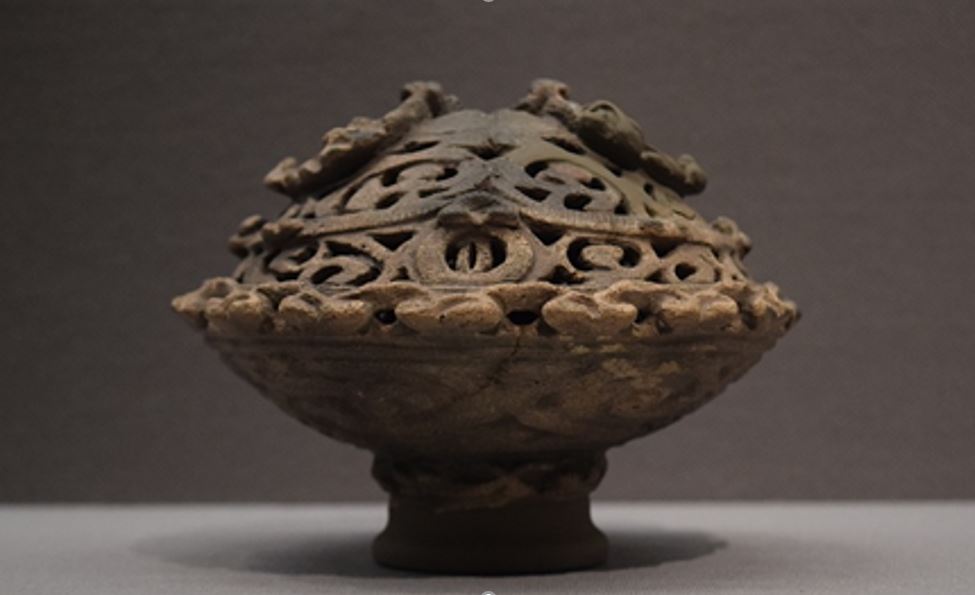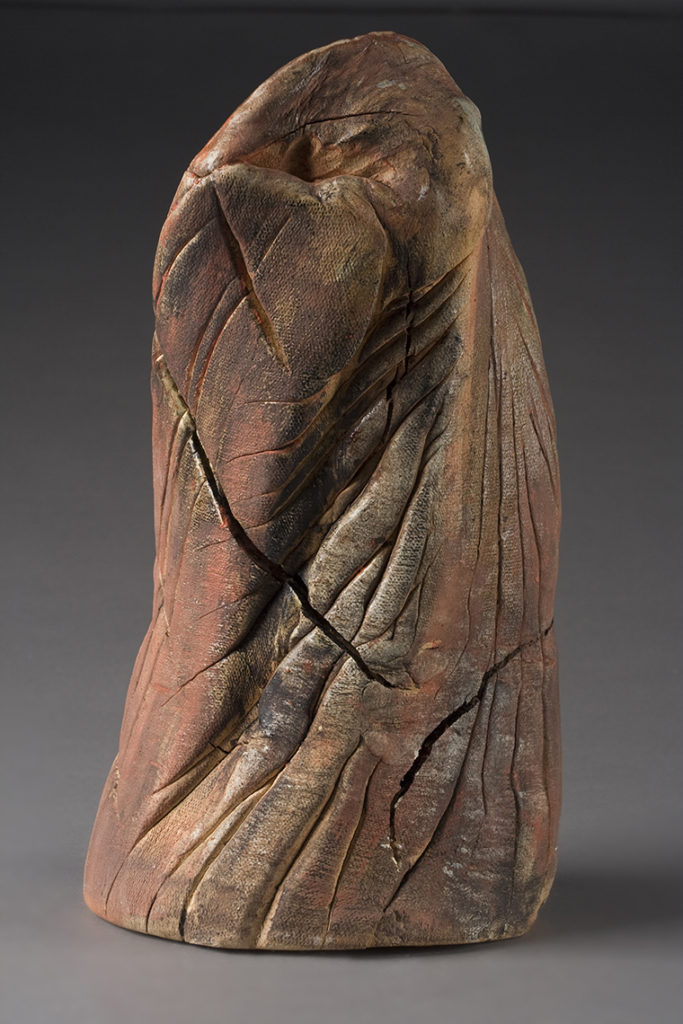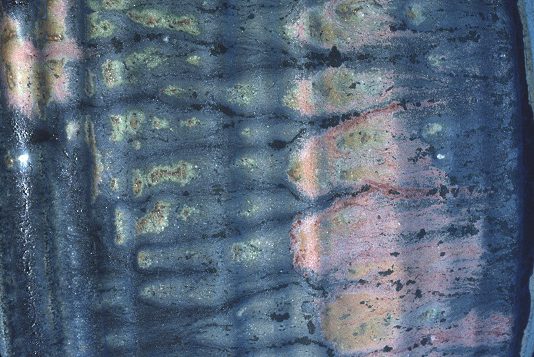(meandering from a to b, and so on…)

This post is longish and wanders—not without purpose. Forewarned is forearmed!
My queries in this post are about neither the deeper evolution of human beings—their coming into existence at all— nor about the astonishing array of all the living entities within the envelope of the inanimate, dynamic universe in its entirety. But, truly, that is, in itself, an absolutely stunning and fascinating realm! Another post on life’s arising within an a non-living environment? Perhaps.
Rather, the curiosity and questions here are interwoven within the development of human beings in their state as human beings: not about their coming to be human beings. Of course, I get tempted to follow that path as well—going down the rabbit hole is always beguiling, even when disorienting. Now, in the present age, it is at least somewhat conceivable to understand the evolution of life, even though we are not yet ready fully to comprehend it. Conceptual tools and devices nurture insight and complement intuitions, and we do not yet have them all at our disposal. Some, yes!
The post does, however, touch on clay objects, rudimentary carved, shaped, painted and fabricated things: primal stone-based physical practices from very early on in human history and prehistory (enticing areas of reading which give delight and enjoyment in themselves). (notes below) The present undercurrent theme—its idea/question—can be expressed in several ways. For example: how, and under what conditions, is it that creatures such as human beings, can and do learn to advance, improve and create items, objects, things, social practices and their diverse interrelated technologies, protocols and socio-communal understanding? These states and accomplishments arise from, and within, previous states and times when they, these human animals, did not have, or know how to do, what they ultimately learned to do.1 How do humans learn to improve, sense where and what they are, and create things and notions which previously did not exist? What gave rise over time from within the lived experience and evolutionary changes of our most ancient ancestors, to our being alive now/today? What led to our being aware of stuff, sensing things in life, and being self-aware, and to our ability to plan, to develop actions and generate purposes about those things we previously did not know or do?
In a broad form we would ask, how did and do we learn from experience: that is, how do we learn, and, what is experience?2
For myself, I do not know the answers to such questions, and I would guess you don’t either. Our not knowing or understanding do not, however, stop us from being and doing. Broadly speaking, it seems to me that there is nothing akin to deeply integrated, coherent answers as yet to such obvious questions.3 I have always liked this type of question and its cousins, because ‘experience’ is so deeply interwoven with learning, and with the life humans actually live, myself included. At the same time, this life we have and live, is itself a learning experience. And, all of this is within the shroud of the very experience of being alive, and somehow knowing that we are alive. Remember, however, that this shroud is not the shroud of Turin.
It is natural. We just do not understand it yet. Don’t get distracted!
As an aspect of the natural world in all its fullness, the immensity of being alive is certainly a wonder and a puzzle. Humans direct a fair amount of time and energy reflecting on it and trying to comprehend it. As one can see, this bundle—being, sensing, living, experiencing, learning, thinking, knowing, doing, being—is a somewhat circular package, and therewith, inherently somewhat obscure to reflective thought. There do not seem to be any simple rules for unpacking the bundle, not for want of effort!
What we call science in the modern age, seeks to get out of this containment by establishing its searching methodologies as a way to discover and know the nature of existence as an objective reality outside human feeling, sensing, thinking, etc.3 This contemporary slant called science, is a relatively new approach to learning about reality in the human history of knowing and thinking. The bit of circularity just mentioned above will return in later posts when I wonder and discuss the nature of perception—noting this and that (e.g., sensing, seeing, hearing, touching, smelling, tasting, and so on…). I will come back to these ideas as we return to the concept of physicality (note my post on physicality). In particular, I will return to the the role of the physical state of making pots in the potter’s studio. And of course, the empirical method of verification and scientific thinking about ‘objective‘ reality will enter scrutiny as well at that time. When we return to this circularity in thinking, we will, with a curious pleasure, probe what neuroscientists (and a number of physicists with broad humanist interests) are currently outlining as the diverse, fundamental tasks and functions of the human brain in these processes. That’s actually where I personally have my most perplexing fun.4,5,6,7 This post is already a bit long so I’m going to save some of its content for future posts. This is a post, not a book!
But long before the scientific revolution so prominent in our age, entered human life on earth, there were deep shifts and transitions already in motion, and these, tens of thousands of years ago. And a good thing they were! 8c Paleolithic humanity is inherently amazing! And living 70 to 30,000 years ago was not at all without its fascination and development.


In the 21st century, we tend to think that the earliest of human times was something like the most basic survival modes of existence, and in many respects, it was. In these very early times, however, humanity also brought into being, creative realms and symbolic notions: the Venus of Dolni Vestonice (30-25,,000 BCE); and many comparable figurines, in addition to the geographically dispersed cave drawings.

Given the complexity of even the simplest forming and firing processes for primal clay objects, this is wonderfully astonishing. Would you know how to do it without the advantage of today’s libraries, workshops and videos? I would wager ‘no’. 14a



The movement onward to refined and designed efforts and artifacts, and subsequently, in more recent eras (14,000 to 10,000 years ago) to the rich, communal knowledge of Jomon pottery, for example, even earlier beads and Egyptian ceramics, is wonderfully remarkable, non? 9b, 12


And in the midst of these transformations, many humans were also shifting to agriculture of the land and animal husbandry?12,14 Of course, none of this has anything obvious to do with raising progeny: we are not antelopes or deer which are able to walk almost instantaneously upon exiting the mother’s womb. We were bigger than newly born bear cubs but at least as helpless, i.e., more helpless than helpless. We were vulnerable, defenseless and edible. We were absolutely parent/community dependent when born—and still are to this very day. And who knows, and how do they know, what things we should eat as we grow and mature (if we do), and which foods are deadly? Many of our earliest ancestors died on the path to our present. As the simple saying states: live and learn. Easy to say, most assuredly not simple to do, or to pre-know! We are, after all, finite—being limited is not a fault: it is only a mode of existence. In the right circumstance, apart from its complexity and tremendous inconvenience, it is even fun!
We, contemporary humans that we are, call ourselves homo sapiens.8 We should be very prudent about how seriously we take the word ‘sapiens’, and of course, the noun ‘homo’. We use these words easily and with passive comfort even though they were assigned as part of humanity’s earlier/prior ontologically hierarchical, mythic, world structure.13 Humans have often classified themselves as rational animals, and as thinking and reasoning animals. Typically over time, we have sought to establish a clear line of demarcation from other (lower) animals and in certain religious or quasi-religious communities or circles, this rational/reasoning aspect is also interwoven with what is called our soul or mind, which was deemed to be separate from, but in relation to, the body. It’s not so far back in time (and alive in many quarters even today) that homo, meaning ‘man’, meant literally man, i.e., not ‘woman’; and certainly not ‘humanity’. This language which we often use today, helped us to see ourselves in the world and to assign ourselves a place of value in the bio-universe, therewith outlining what was taken to be the finer character of our existence. (Some would say, below the angels and above the brutes—not a good analogy in a world devoid of gods and angels).13
I say we should be prudent: well, we should, because homo is humanity and sapiens is modern humanity—it is not a man or a group which thinks a certain way, sees things a specific way, has a particular belief system, etc. Life as a whole evolved within its inanimate ‘parentage’, conscious life within sentient life, and conscious life within self-conscious, within thinking, imagining, etc.! It is not just philosophers who do not know the exact meaning of these words or the fields covered by these concepts, or how they fit into our fuller grasp of the big picture. Lay people still call aspects of existence, the ‘real world’ and they do not mean just our words and theories about it. When push comes to shove, rare it is indeed for a person (i.e., a living, social, sentient, self-conscious, imaginative, emotionally astute thinker) to have a deeper grasp of notions of life in a real world.
Thinking of being alive in an inanimate universe, we should not forget the inanimate atoms, sub-atomic particles, quanta, energy fields, quarks and gluons, and so on…). We, in the 20th and 21st centuries, are told that we humans are also constituted by these very small inanimate things and given that we are a part of nature/realty, i.e., we are not separate from it, nature. Today, to many of us, that seems intuitively obvious. We do, however, often get confused about our identity as natural, and our perceived feeling as separate from the world, while involved in it: “I” am conscious of/I feel “it”. It is objective, I am subjective, non?18 The role, place and nature of thought, imagination and feeling (consciousness) for example, have becomes a little less clear than not so long ago. A wonderful quandary, not easily disentangled. More on that to come—back to physicality.
There were clay pots and food-related objects known to be made about 16-12,00 years ago. These objects were created by simple hand techniques and fired with the intensity of early kilns/ovens, created for these purposes. Similar finds in what are now called the Americas indicates early peoples were moderately acquainted with clay and its uses, with basic decorating and firing techniques. There were no handbooks and instruction manuals in these very early times—learning through doing, practice and imitation, but creative from the earliest moments. Such things but grew out of community life, oral and practiced traditions—living memory. When we read about these innovative undertakings by so many diverse and independently living early peoples across the world, we may be surprised to know that several to many thousands of years ago, a great many of humanity’s ancestors were already working with clay, creating and transforming it into symbolic, decorative and directly useful functional pottery and wares. This is fantastic in and of itself.
It is, however, very important to recall that well and long before these finished, fine, imaginative and stable artifacts were made by human hands, innumerable, undefined and chaotic but ultimately orderly steps and efforts had already been played with, tested, rejected, accidentally come upon, grasped, sensed/imagined and practically understood and systematized: all enough to have finding clay, extraction of clay, molding/shaping, drying, painting, carving, firing habits and teaching and communication patterns. In addition, there were cultural and social sharing values and interdependent human actions reasonably ensconced in daily, seasonal and longer-term human life to enable all this creative making and actual living in groups.14
All of this is inherent in the notion of creative drift.
Every once in a while, I reflect on an unusual ceramist from the 16th century in France, many, many hundreds of years after large swaths of humanity had developed and advanced fairly sophisticated clay making, trade and businesses. Because of the widespread knowledge-secrecy of potters, their villages, guilds and larger communities, single individuals could never enter the ceramics world. No one would teach them. Knowledge was/is power and this secrecy allowed a certain social control over the economics and trade within the clay world. These secrecy practices were alive and well into the 20th century when a few adventurous and brave souls began to change the dynamic. This ceramist, Bernard Palissy, was almost entirely self-taught, an extremely rare occurrence in the broad history of clay. Many considered him to be insane—a story worth the diversion. Go, have a look.14a

1575-1600_ca.15
Fortunately for contemporary humanity, when we chance to reflect on our existence from much earlier times to the present, we feel that we are in a stronger, more sophisticated and stable state than all our forebears—human and otherwise. There are times, of course, when many might wish for simpler times. It is not clear to me, however, that earlier means simpler in any obvious way. They do not necessarily easily coexist. Today is fine, thank you.16 Besides, it’s all we have. Creation is not an aspect only of the past, and it does not go backwards!17 Sometimes, of course, our mind pretends it does.





These few pieces are all late 20th and early 21st century. Creative drift is ongoing, and on all fronts!
- https://humanorigins.si.edu/evidence/human-fossils/species/homo-sapiens
- Yuval Noah Harari: What explains the rise of humans? | TED Talk 2b. https://www.amazon.ca/Knowledge-Experience-C-D-Rollins/dp/0822983842 ; a small primer for philosophy. “A guide to ontology, epistemology, and philosophical perspectives for interdisciplinary researchers – Integration and Implementation Insights” 2c. https://i2insights.org/2017/05/02/philosophy-for-. interdisciplinarity/amp/ A very comfortable intro to social science research thinking.
- https://web.uvic.ca/~mroth/PREPRINTS/Experience_424b.pdf#:~:text=Towards%20a%20Theory%20of%20Experience%20Wolff- 4 Michael%20Rotha%2C%2A%20%26,is%20related%20to%20learning%20and%20change%20remains%20untheorized :: **this paper is mostly about a case study in science education but it explores concepts of experience and adds subtle nuances which enrich understanding of the basic concept. Underlying this type of question are several philosophical problems, namely: what is knowledge/what does it mean to know something? Is there a reliable method for coming to know something, or is there a method whereby we can reliably expand knowledge? No clear on any of this? also read “A guide to… “in note 2.
- David Hume :: A Treatise of Human Nature – Bing Darwin :: https://en.wikipedia.org/wiki/Charles_Darwin https://en.wikipedia.org/wiki/On_the_Origin_of_Species
- anil seth the neuroscience of consciousness – Bing
- https://www.amazon.ca/Big-Picture-Origins-Meaning-Universe/dp/0525954821
- Behave: The Biology of Humans at Our Best and Worst: Sapolsky, Robert M.: 9781594205071: Neuroscience: Amazon Canada
- Yuval Noah Harari: A History of Humankind – Bing video https://www.amazon.ca/Sapiens-Humankind-Yuval-Noah-Harari/dp/077103850X 8a. CGSS EARLY PALEOINDIAN PERIOD (peachstatearchaeologicalsociety.org) 8b. .Arrowheads and Other Prehistoric Hunter Tools (thoughtco.com) 8c. Stone Age | Definition, Tools, Peoples, Art, & Facts | Britannica :: World Prehistory: A Brief Introduction – 10th Edition – Brian M. Faga (routledge.com) 8c. https://www.history.com/news/prehistoric-ages-timeline 8d. https://www.thoughtco.com/what-is-an-atlatl-169989
- https://www.historyofinformation.com/detail.php?entryid=2493 9a. https://en.wikipedia.org/wiki/Venus_figurine 9a. https://www.historyofinformation.com/detail.php?entryid=249 9b. https://www.ancient.eu/Jomon_Pottery/ ::::: https://www.amazon.ca/History-Beads-Present-Revised-Expanded/dp/0810951746 :::: early Egyptian ceramics – Bing images ::::: https://www.amazon.ca/History-Beads-000-B-C-Present/dp/0810926172/ref=pd_sim_3?pd_rd_w=Q3MNf&pf_rd_p=29a5083d-cfc6-4fd7-8321-ec2684997c4f&pf_rd_r=4PYAQ60PSXQKSBNH9CYS&pd_rd_r=2a4dca42-67a7-4af9-b2c8-f7f502176ec7&pd_rd_wg=5bVAG&pd_rd_i=0810926172&psc=1
- a https://www.historyofinformation.com/index.php
- Cave Art France – Bing images :::: Cave Art 101- National Geographic). – Bing
- Neolithic Revolution – HISTORY 12a. Ancient Pottery: Types, History, Development of Clay-Fired Vessels (visual-arts-cork.com)
- https://en.m.wikipedia.org/wiki/Carl_Linnaeus
- https://www.historymuseum.ca/cmc/exhibitions/archeo/ceramiq/cerart1e.html#1 :::: 14a. https://arstechnica.com/science/2016/12/10000-years-ago-cooking-technology-revolutionized-human-life/ :::: 14b https://www.history.com/topics/pre-history/neolithic-revolution#section_4
- https://commons.wikimedia.org/wiki/File:Bottega_di_bernard_palissy,_vassoio_rustico,_1575-1600_ca..JPG :: https://en.wikipedia.org/wiki/Bernard_Palissy
- https://www.goodreads.com/book/show/52578297-the-midnight-library
- http://E = mc² | Equation, Explanation, & Proof | Britannica :: Getting to Mars | Spacecraft – NASA’s In Sight Mars Lander
- https://en.wikipedia.org/wiki/Peter_Voulkos
- https://en.wikipedia.org/wiki/Robin_Hopper


So beautifully written and illustrated. It resonates with me as the basis of my belief in universality – the spirituality of life starting with basal elements and the struggle against entropy. I have avoided segregated religious thoughts and alliances most of my days on this planet, which often lead to alienation of “the other,” conflict, destruction, and war. Or as Steven Pinker wrote, “The ultimate purpose of life, mind, and human striving: to deploy energy and information to fight back the tide of entropy and carve out refuges of beneficial order.”
Please do more!
this realm is more elaborate and interwoven, and therewith more intellectually stimulating while being more difficult to probe and hold together. not an impediment, but not to be forgotten.